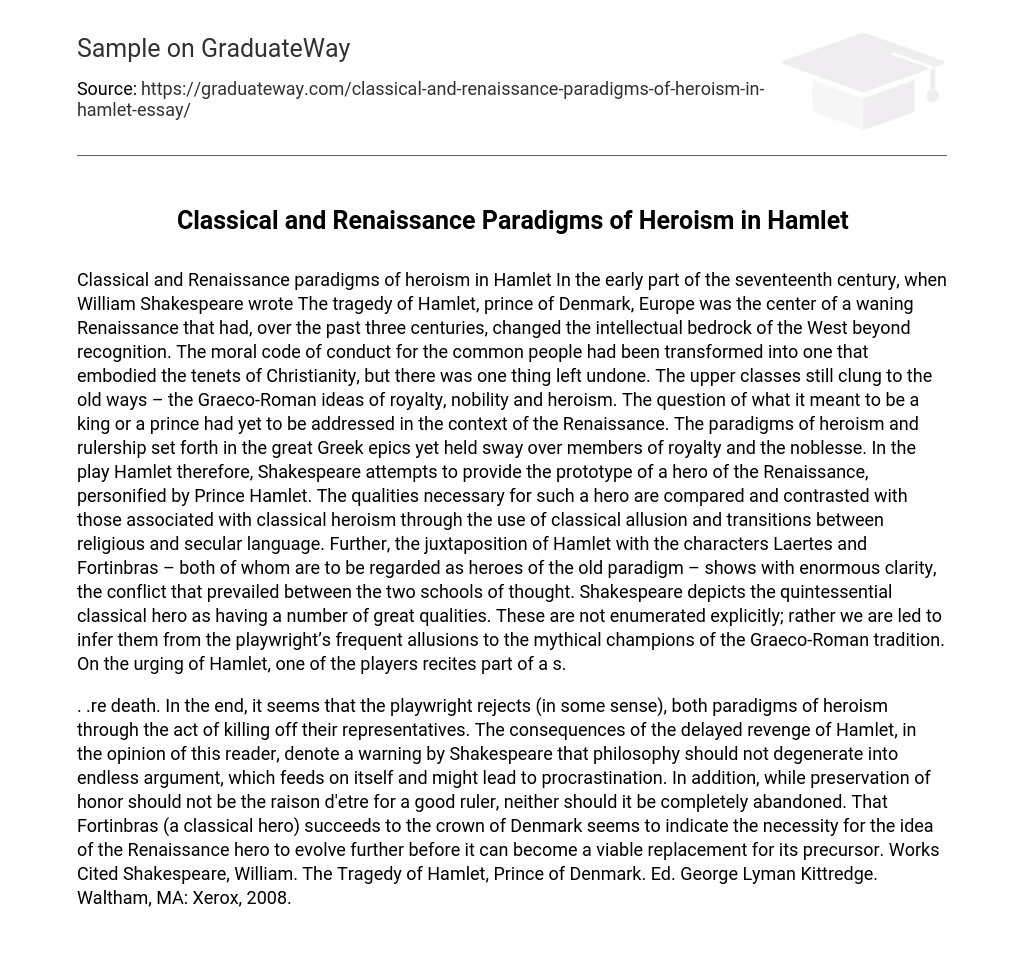Classical and Renaissance paradigms of heroism in Hamlet In the early part of the seventeenth century, when William Shakespeare wrote The tragedy of Hamlet, prince of Denmark, Europe was the center of a waning Renaissance that had, over the past three centuries, changed the intellectual bedrock of the West beyond recognition. The moral code of conduct for the common people had been transformed into one that embodied the tenets of Christianity, but there was one thing left undone. The upper classes still clung to the old ways – the Graeco-Roman ideas of royalty, nobility and heroism. The question of what it meant to be a king or a prince had yet to be addressed in the context of the Renaissance. The paradigms of heroism and rulership set forth in the great Greek epics yet held sway over members of royalty and the noblesse. In the play Hamlet therefore, Shakespeare attempts to provide the prototype of a hero of the Renaissance, personified by Prince Hamlet. The qualities necessary for such a hero are compared and contrasted with those associated with classical heroism through the use of classical allusion and transitions between religious and secular language. Further, the juxtaposition of Hamlet with the characters Laertes and Fortinbras – both of whom are to be regarded as heroes of the old paradigm – shows with enormous clarity, the conflict that prevailed between the two schools of thought. Shakespeare depicts the quintessential classical hero as having a number of great qualities. These are not enumerated explicitly; rather we are led to infer them from the playwright’s frequent allusions to the mythical champions of the Graeco-Roman tradition. On the urging of Hamlet, one of the players recites part of a s.
. .re death. In the end, it seems that the playwright rejects (in some sense), both paradigms of heroism through the act of killing off their representatives. The consequences of the delayed revenge of Hamlet, in the opinion of this reader, denote a warning by Shakespeare that philosophy should not degenerate into endless argument, which feeds on itself and might lead to procrastination. In addition, while preservation of honor should not be the raison d’etre for a good ruler, neither should it be completely abandoned. That Fortinbras (a classical hero) succeeds to the crown of Denmark seems to indicate the necessity for the idea of the Renaissance hero to evolve further before it can become a viable replacement for its precursor. Works Cited Shakespeare, William. The Tragedy of Hamlet, Prince of Denmark. Ed. George Lyman Kittredge. Waltham, MA: Xerox, 2008.





